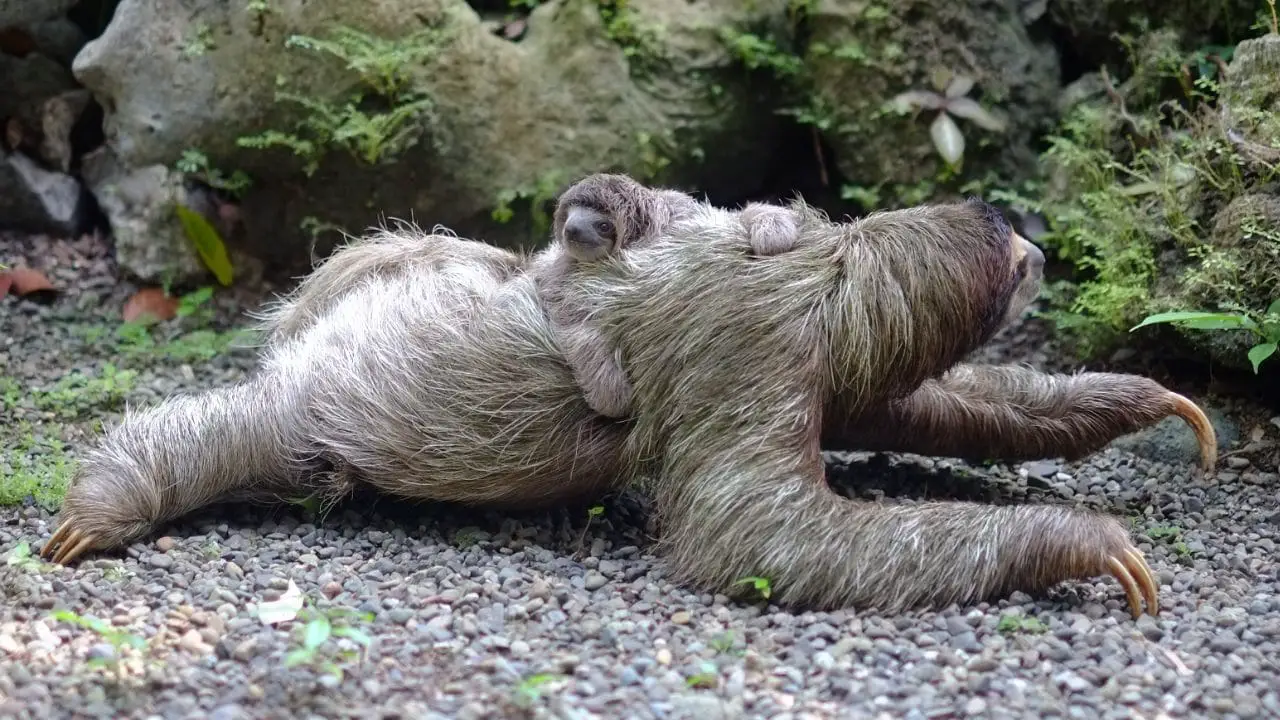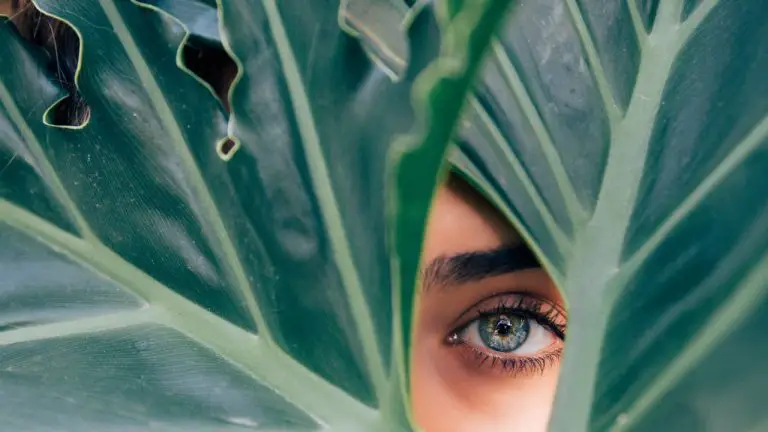5 Life Lessons From a Sloth: How Animals Can Teach us to Live Happier
Earlier today I was writing an article for issue 3 of Your Best Self Magazine about how to find a new passion. As I wrote I felt a bit fraudy as this is something I often feel lost about, then as I researched the topic more I began to feel inspired. Discovering new life lessons and animals are a passion of mine.
Note: This post may contain affiliate links, which means if you buy from my link I might make a small commission. This does not affect the price you pay. See the full affiliate disclosure here.
I have often pondered how to pass my immense passion and never-ending amazement with our natural world onto others. How do I use this passion to help people and animals? Then this blog idea struck me ‘5 life lessons from a sloth: how animals can teach us to live a happier life’.
I have always looked to nature for life lessons. My best thinking is done while walking in a park or forest. I am constantly in awe of evolution and how everything came to be. This world is full of weird and wonderful life.
At university one of my majors was in Ecology and Biodiversity. In a nutshell, ecology is the study of how living creatures interact with each other and the world around them. There are certain rules of nature that seem to work in ecosystems of every size from your gut microflora to the rocky seashore to the forests of Siberia.
Why look at nature for life lessons?
Life never ceases to amaze me. Though humans often seem to think of ourselves as somewhat separate to nature, we are not. The rules of nature apply to us just as much as everything else on this planet. This gives us the perfect opportunity to learn about nature and work with it instead of against it. The natural world is full of weird and wonderful creatures with life lessons to share.
If you like this article or you like the concept please leave a comment below. It means the world to me to know you have found this interesting or useful. There is much more where this came from if you want to know more. Today we will start with the mighty sloth!
Why should we look to sloths to find more happiness?
First, look at this video of adorable baby sloths getting a bath at a rescue center… is that not enough to make you happier??
Sorry, not a life lesson, just an excuse to look at adorable baby animals. But, looking at cute animals has been found to make us better when completing tasks that require careful, focused attention (Nittono et al., 2012). I didn’t really need a reason to look at cute baby animals all day long but that is good enough for me!
I realize I did promise life lessons here not just cute images of sloths. Here we go,
5 Life Lessons From a Sloth: How Animals Can Teach us to Live Happier
Life lesson #1. Slow down!
It is easy to rush through life and miss it all. Fellow mindfulness nerds know what I am talking about. Life is one of those things that you don’t always notice that you are missing out on it until you take a moment to stop and look around.
Sloths have no problem taking life slowly. In fact, they rarely move more than 100 m (328 ft) in a day and their average speed does not exceed 0.5-0.6 kph (0.31-0.37 mph) (Billet et al., 2012).
Okay, you don’t have to slow down that much but it is a good reminder to take a moment to breathe and look at the world around you.
Life lesson #2 Always carry healthy snacks
This is a bit of a weird one. You may have heard how some sloths appear green because of the algae that grow on their fur. Traditionally this was thought to help them camouflage. This may be true, but a study by Pauli et. al., (2014) found that specialized three-toed sloths actually eat the algae off their fur.
Since sloths move so slowly it can sometimes be hard to find all the right nutrients. Growing their own algae gives them a lipid-rich, highly digestible food available 24/7.
Getting the right nutrients is super important for us to have a happy, healthy body & brain. Read our last post 3 Diet Myths That Cause Depression to find out more.
Life lesson #3 Look after the hand that feeds you (aka be nice to the earth we kinda need it)
The fur-algae story doesn’t stop there. Weird and wonderful here we come. Like us, algae need nutrients to survive and the sloths are happy to provide it! As well as algae they make their fur home to pyralid moths. More moths mean more inorganic nitrogen for the algae. More algae mean more sloth food!
The sloths will even risk their own lives from predators once a week by climbing down trees to poop and allow the moths to lay their eggs in the soil & sloth dung. The moths then hatch and fly back up to find the sloth (Waage & Montgomery, 1976).
Moral of the story; If you want to live a healthy life with a healthy diet you better look after where it comes from!
Life lesson #4 Get a good night’s sleep, no matter the stress you are under.
Sloths sleep between 9 and 10 hours a day. Researchers hypothesized that in Panama the mainland sloths at risk of predators would sleep less than those on the predator-free island. They were wrong. All the sloths were found to sleep on average between 9 and 10 hours a night.
They did find that sloths at risk of predation made sure to get their beauty sleep at night, presumably to avoid nocturnal cats. The predator-free sloths are a lot more relaxed with their time of day they choose to snooze (Voirin et. al., 2014).
This is a lesson I need to take on board. I am terrible at putting myself to bed. I am a night owl and always end up getting busy after 10 pm and then constantly being tired all day.
Regardless of the life stresses, we face next time think of the sloth, even when faced with scary nocturnal cats wanting to eat you they make sure they get their 10 hours of shut-eye.
If you want to learn more about why we need sleep watch this TED talk. Why we sleep has been a scientific mystery until very recently.
Life lesson #5 Know your strengths
With sloth’s long claws and weak hind legs, they are terrible on the ground. They have to drag themselves along awkwardly and are unable to escape predators. While slow these attributes make them great at hanging and moving through the trees. Sloths are also great swimmers in rivers (Anderson & Handley, 2001).
Because they are not very good on the ground they only go to the ground once a week to go to the toilet (Waage & Montgomery, 1976).
While I am a big believer in pushing yourself out of your comfort zone and learning new skills it’s also good to know yourself, learn your strengths and work with them so you can become your best self.
If you liked this article please comment below and let me know. I am a bit animal crazy so would love to write about more if you like it ????
References:
Anderson, R. & Handley, C. (2001). A new species of three-toed sloth (Mammalia: Xenarthra) from Panama, with a review of the genus Bradypus. Proc. R. Soc. B, 114(1), 1-33. https://pdfs.semanticscholar.org/76bb/674580995826df310b9d6b91475a069a770c.pdf
Billet, G., Hautier, L., Asher, R., Schwarz, C.,Crumpton, N., Martin, T., Ruf I. (2012). High morphological variation of vestibular system accompanies slow and infrequent locomotion in three-toed sloths. Proc. R. Soc. B. DOI: 10.1098/rspb.2012.1212
Nittono, H., Fukushima, M., Yano, A., Moriya, H. (2012). The Power of Kawaii: Viewing Cute Images Promotes a Careful Behavior and Narrows Attentional Focus. PLOS ONE 7(9): e46362. https://doi.org/10.1371/journal.pone.0046362
Pauli, J., Mendoza, J., Steffan,S., Carey, C., Weimer, P., Peery Z. (2014). A syndrome of mutualism reinforces the lifestyle of a sloth. Proc. R. Soc. B. DOI: 10.1098/rspb.2013.3006
Waage, J. & Montgomery G. (1976). Cryptoses choloepi: A Coprophagous Moth That Lives on a Sloth. Science, 193 (4248), 157-158.DOI: 10.1126/science.193.4248.157
Voirin, B., Scriba, M., Martinez-Gonzalez, D., Vyssotski, A., Wikelski, M., Rattenborg, N. (2014). Ecology and Neurophysiology of Sleep in Two Wild Sloth Species. Sleep, 37(4), 753–761, https://doi.org/10.5665/sleep.3584







